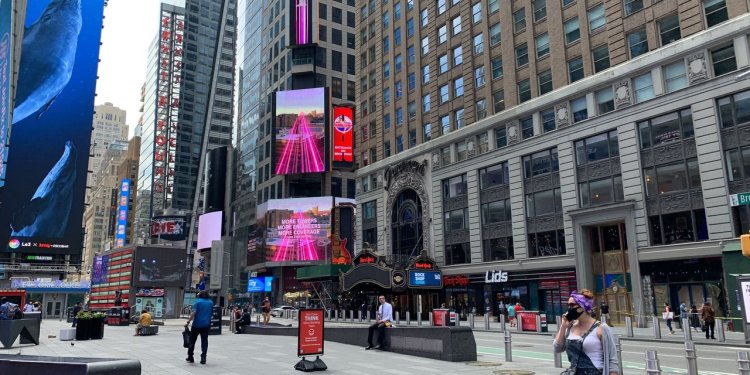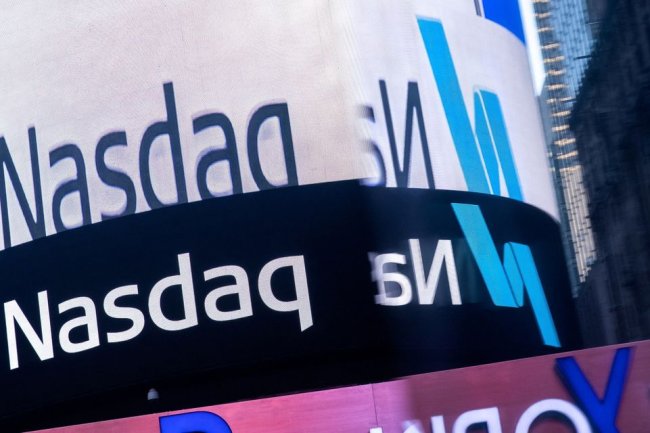Do We Understand Covid Yet? Part Two
Our pandemic outcome would have been better with more debate, less censorship. By Holman W. Jenkins, Jr. Aug. 18, 2023 5:37 pm ET Times Square in New York, July 13, 2020. Photo: Niyi Fote/Zuma Press Each technological age renews the fight over speech infringement. If given an inch, government censors inevitably take a mile. In July, pushback came when a federal court issued a temporary injunction against federal bureaucrats leaning on social-media companies. The decision takes particular trouble to note the bureaucracy’s campaign to silence dissenters to its Covid policies. Many of those policies are now seen to have been ill-advised. A plaintiff in the lawsuit, Stanford’s Dr. Jay Bhattacharya, recently made an arresting admission in an interview with the Hoover Inst


Times Square in New York, July 13, 2020.
Photo: Niyi Fote/Zuma Press
Each technological age renews the fight over speech infringement. If given an inch, government censors inevitably take a mile. In July, pushback came when a federal court issued a temporary injunction against federal bureaucrats leaning on social-media companies. The decision takes particular trouble to note the bureaucracy’s campaign to silence dissenters to its Covid policies. Many of those policies are now seen to have been ill-advised.
A plaintiff in the lawsuit, Stanford’s Dr. Jay Bhattacharya, recently made an arresting admission in an interview with the Hoover Institution. Dr. Bhattacharya was co-author of the Great Barrington Declaration, that still-vilified October 2020 challenge to Covid lockdowns. He says the declaration was the “least original thing I ever worked on in my entire life.”
This rang some bells with me. In late January and early February 2020, I channeled what experts were thinking about the then-novel coronavirus. Most infections were mild or even asymptomatic and weren’t being properly counted. The virus was likely already rampant in places it wasn’t yet detected, like New York City. It couldn’t be stopped at a cost a sane humanity would be willing to pay. It was also far less deadly than was being reported.
But then things turned weird. This balanced assessment, roughly universal among experts, was shelved in a bandwagon frenzy that deserves more attention than it’s gotten. Dr. Anthony Fauci, in a recent interview with the New York Times, insists it wasn’t him but politicians who opted for lockdowns and school closures. His remarks, though widely panned, provide part of the answer: Voters and elected officials didn’t want realism in handling Covid. They wanted a fantasy about the virus being defeated.
A media cacophony treated every infection and death as a political failure. Politicians became keen to appease elderly voters, though it’s far from clear the elderly benefited from the steps politicians started taking. Never mind: Officials increasingly had every incentive to take extreme measures regardless of benefit or cost.
And yet realism was also available if we wanted it. The Centers for Disease Control and Prevention from day one explained that most Americans would encounter the virus in a matter of months. This advice was eventually scrubbed from the CDC website perhaps because this column mentioned it too many times, but it continued to appear on other government websites, including those of the U.S. military.
Our early inklings proved correct: Covid’s defining feature wasn’t lethality but speed and ease of spread. Covid’s threat to the social order lay primarily in the number of cases that might hit medical providers at the same time. Looking back, the explosions in Wuhan, Northern Italy and New York City seem best explained by a virus rampant in populations that hadn’t yet been warned about its existence, and by medical providers accidentally helping to transmit it to the most vulnerable.
Our steps did not significantly impede its spread even as our efforts miraculously quashed the annual flu. In year two, despite vaccination, as many Americans died as in year one. Yet further healthcare meltdowns were avoided. Vaccines clearly saved lives; if lockdowns and masking mandates contributed by keeping people alive until they could be vaccinated, though, the effect is hard to sort out from the voluntary measures an informed public would have taken anyway.
Meanwhile, bans on elective medical procedures, forced unemployment, school closures and other extreme measures produced their own toll. Among the 1.1 million Americans who died of Covid, their average age was 74 and they lost 12 years of life. Nobody yet knows the total years lost to younger people due to “excess deaths” from substance abuse, suicide, homicide, accidents, lack of cancer screening and other non-Covid causes. Only with the arrival of the Biden administration did it become expedient to acknowledge a truth known from the start: The virus was something we would have to “live with,” not defeat with indiscriminate social and economic curbs.
This is where the decision of U.S. District Judge Terry Doughty sheds light. His detailed recounting shows a Washington energetic in protecting Americans from Covid opinions, expertise and claims that conflicted with its own, at a time when it served politicians to show they were trying to save Americans from encountering a virus that couldn’t be avoided. When government has a message to deliver, especially when the political stakes are high, it won’t be content just to push its own message, it will try to silence others. Fighting back will always be necessary. The only surprise in our age is how thoroughly the “liberal” position has become the pro-censorship position.
What's Your Reaction?

















